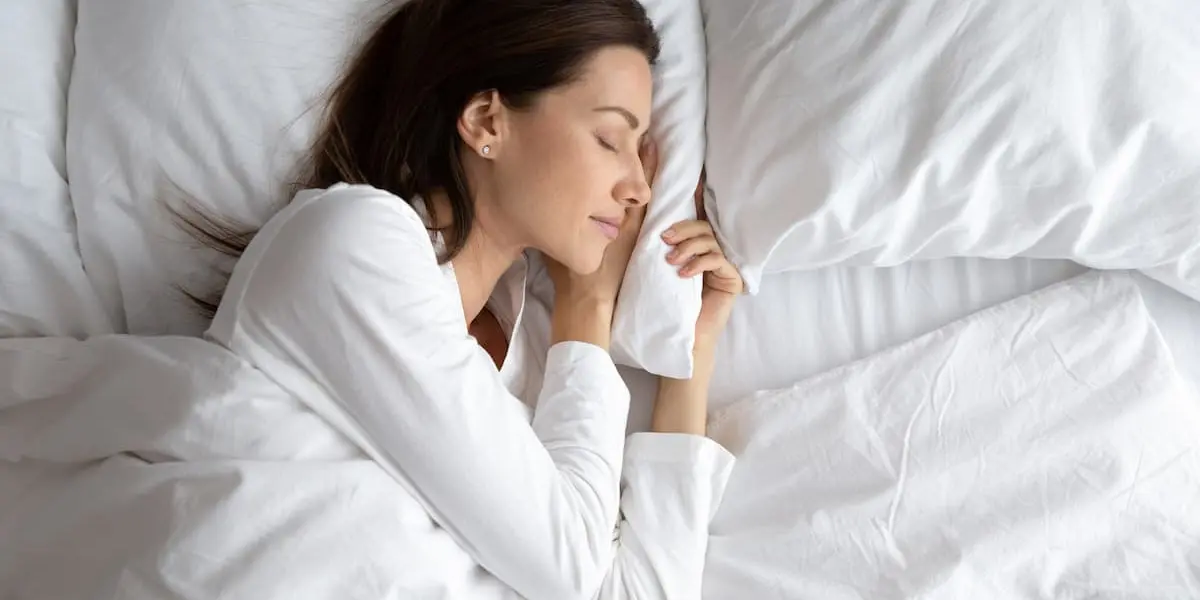Central hypopnea is a type of sleep-disordered breathing characterized by shallow or decreased breathing during sleep.
It is a form of sleep-related hypoventilation and belongs to a spectrum of sleep-related breathing disorders that also includes the more widely known condition, obstructive sleep apnea (OSA).
Absence or Diminished Respiratory Effort
Central hypopnea involves a reduction in airflow without significant respiratory effort or upper airway anatomical obstruction. It differs from obstructive events like apneas and hypopneas where breathing is impaired due to collapse of the upper airway.
The key feature of central hypopnea is absent or diminished respiratory effort due to neurological or medical factors affecting the central control of breathing.
Prevalence of Central Sleep Apnea Syndromes
Prevalence estimates indicate that central sleep apnea syndromes, including Cheyne-Stokes respiration and central hypoventilation, affect around 1% of the adult population.
However, central hypopneas can also occur in conjunction with obstructive sleep apnea resulting in a mixed pattern of sleep-disordered breathing. This makes determining the exact prevalence of central hypopnea challenging.
Regardless of cause, the hypoxemia, hypercapnia, sleep fragmentation and arousals resulting from central hypopneas can have major consequences for health and quality of life.
Increased awareness and understanding of central hypopnea is key to improving diagnosis and management.
Causes and Risk Factors of Central Hypopnea
Central hypopnea occurs when there is reduction in the neural drive to breathe during sleep. This leads to decreases in tidal volume and respiratory rate. Several factors can impair the brain’s regulation of breathing or cause instability in ventilatory control:
Neurological conditions
Stroke, particularly involving the brainstem, can disrupt pathways involved in respiratory rhythm generation and chemoreflexes. Central congenital hypoventilation syndrome stems from genetic mutations affecting the body’s central chemoreceptors.
Cardiovascular diseases
In heart failure, fluid accumulation in the lungs can blunt neural responses to chemical stimuli affecting ventilatory drive. Cheyne-Stokes respiration with central apneas or hypopneas arises due to circulatory delay between the lungs and respiratory control centers.
Obesity
Excess weight is thought to predispose to central sleep-disordered breathing through effects on respiratory system mechanics, ventilation-perfusion mismatching, and leptin resistance which can impair chemoreflexes.
Medications
Respiratory depressants like opioids, sedatives, and anesthesia medications can suppress the responsiveness of the brain’s respiratory centers.
Genetic factors
Variants in genes controlling respiratory chemoreception may increase vulnerability to central hypopneas. Familial clustering has been observed.
In addition to the above primary causes, the following medical conditions have also been associated with an increased risk for central sleep-disordered breathing:
- Renal failure
- Hypothyroidism
- Acromegaly
Signs and Symptoms of Central Hypopnea
The hypoxemia, hypercapnia, and sleep fragmentation resulting from repetitive central hypopneas can lead to:
- Excessive daytime sleepiness
- Cognitive dysfunction – impaired concentration, memory and attention
- Morning headaches
- Insomnia complaints
- Mood disorders – irritability, depression
- Fatigue and malaise
- Hypertension
More severe cases can present with symptoms of right heart failure like peripheral edema. However, the severity of daytime symptoms is not always proportional to the degree of hypoxemia. Some patients exhibit few symptoms despite significant oxygen desaturation.
Central Hypopnea Diagnosis
Polysomnography is the gold standard for diagnosing central hypopnea. Key measurements include:
Apnea-hypopnea index (AHI) – The number of apneas and hypopneas recorded during the study per hour of sleep. Provides an overall severity index of sleep-disordered breathing. An AHI above 5 is generally considered abnormal, with moderate sleep apnea defined as an AHI of 15 to 30. However, the exact AHI cutoff used to define clinically significant disease can vary.
Detection of respiratory effort – Chest and abdominal breathing motions are measured using piezo crystal belts, respiratory inductance plethysmography, or esophageal manometry. Polysomnography distinguishes central from obstructive events based on the presence or absence of effort during respiratory events.
Airflow monitoring – Airflow is directly measured using nasal pressure cannulae and oronasal thermal sensors. A ≥30% reduction in airflow for ≥10 seconds is required for an event to meet hypopnea scoring criteria.
Oximetry – Measures oxygen saturation levels during sleep, detecting intermittent desaturation with respiratory events. A ≥3% oxygen desaturation is required for scoring hypopneas using the recommended American Academy of Sleep Medicine criteria. However, alternative definitions exist using a 4% desaturation threshold.
End-tidal or transcutaneous CO2 monitoring – Directly assesses ventilation by measuring exhaled or cutaneous CO2 levels. Can detect hypercapnia associated with hypoventilation in central sleep-disordered breathing.
Electroencephalography (EEG) – Records brain wave activity to identify cortical arousals associated with respiratory events. These are used in alternative hypopnea definitions requiring an arousal for scoring.
Electromyography (EMG) – Measures chin muscle activity to identify REM vs NREM sleep. Respiratory event characteristics can vary by sleep stage.
Electrooculography (EOG) – Records eye movements to help stage sleep.
The table below summarizes key polysomnographic measurements used in detecting and quantifying central hypopneas:

Central Hypopnea Treatment
Depending on the underlying cause, treatment options for central hypopnea include:
- Positive airway pressure (PAP) therapy – CPAP or BiPAP splints the airway open and improves ventilation. It is a first-line treatment for many cases of central sleep apnea.
- Supplemental oxygen – Increases saturation levels during sleep in select patients.
- Medication adjustment – Optimizing treatment of heart failure can improve central hypopnea in some cases.
- Weight loss – Reduces risk in obese patients through multiple mechanisms.
- Treatment of primary neurological and medical conditions – Key for certain causes like stroke or hypothyroidism.
- Phrenic nerve stimulation – Emerging therapy which uses an implanted device to directly stimulate the diaphragm.
NightLase®: Gentle Sleep Solution
This innovative, non-invasive procedure uses advanced laser illumination to loosen tension in the soft tissues of the throat.
Through a careful, contact-free application, the Erbium light induces gentle contractions in the collagen-rich palate and tongue. This relaxes constricted areas, reducing vibrations that disturb slumber.
By day, restoring rest. By night, transforming troubled rest into peaceful repose. NightLase® helps lessen snores to a soft murmur and calms interruptions that fragment sleep. Approved by dentists and doctors alike for ease of use.
A course of just three to five relaxed treatments over six to ten weeks brings lasting benefits. No unpleasant anesthesia needed – only natural comfort long into the night.
Central Hypopnea: Lifestyle Changes and Management
Beyond medical interventions, individuals with central hypopnea can take steps to improve their sleep and reduce symptoms:
Sleep hygiene
Follow principles like limiting light exposure at night, keeping a consistent sleep-wake cycle between 10pm-6am, sleeping in a dark, cool, and quiet environment, avoiding screens before bed, and establishing a relaxing pre-sleep routine. Good sleep hygiene aims to promote healthy sleep-wake patterns.
Regular exercise
Aim for 150 minutes of moderate aerobic activity or 75 minutes of vigorous activity per week to help improve sleep quality and cardiopulmonary function. Activities like walking, swimming, and yoga are ideal.
Stress management
Cognitive behavioral therapy can help patients identify and change stressful thought patterns. Relaxation techniques such as deep breathing, meditation, and progressive muscle relaxation lower physiologic arousal and promote relaxation.
Dietary changes
Avoid eating large meals, drinking alcohol, or consuming caffeinated beverages within 2-3 hours of bedtime to prevent digestive disturbances and dehydration during sleep. A balanced, nutritious diet also supports overall health.
Positional therapy
Sleeping in a side-lying position can create back pressure to keep the airway propped open and prevent or reduce central apneas and hypopneas. Wearing a tennis ball on the back to avoid rolling onto the back may help with positional therapy.
Sedative avoidance
Limiting use of narcotics, benzodiazepines, barbiturates and sleep aids as they depress the respiratory center in the brain and worsen breathing disturbances during sleep. Alternative relaxation techniques are safer.
Complications and Consequences of Central Hypopnea
The chronic intermittent hypoxia, hypercapnia, and arousals associated with central hypopnea predispose to numerous comorbidities if left untreated:
- Cardiovascular disease – Hypertension, coronary artery disease, heart failure, arrhythmias, pulmonary hypertension and right heart strain.
- Metabolic dysfunction – Impaired glucose tolerance and insulin resistance.
- Stroke – Believed to be related to oxidative stress, inflammation, and endothelial dysfunction.
- Cognitive and psychological problems – Difficulties with memory, concentration and attention. Mood disorders.
- Accidents and errors – Related to daytime sleepiness and cognitive impairment. Decreased quality of life.
- Increased mortality rate – Central sleep apnea associated with higher risk of death in heart failure patients.
Prognosis and Long-Term Outlook for Central Hypopnea
With appropriate treatment, many patients with central hypopnea achieve good control of their sleep-disordered breathing. However, central hypopneas related to Cheyne-Stokes respiration can be more persistently recurrent.
Adherence to PAP therapy is crucial for maintaining positive outcomes. Close follow-up is key to monitor effectiveness and adjust therapy as needed.
For some neurological causes like stroke or central hypoventilation syndrome, central hypopnea may follow a chronic course requiring lifelong treatment. Overall prognosis depends greatly on the underlying etiology.
Central Hypopnea: Current Research and Future Directions
Active areas of research on central hypopnea include:
- Developing alternative neuromodulation treatments like phrenic nerve or hypoglossal nerve stimulation.
- Identifying genetic and molecular factors influencing respiratory control stability.
- Clarifying mechanisms linking central sleep-disordered breathing to cardiovascular disease.
- Optimizing PAP therapy algorithms and interfaces to improve compliance.
- Studying the impact of end-of-life diseases like ALS on central respiratory drive.
- Using computational modeling to better understand loop gain and chemoreflex contributions.
- Exploring the relationships between central hypopneas, arousal threshold, and sleep stability.
Conclusion
Central hypopnea is characterized by reductions in breathing during sleep due to impaired respiratory effort.
Causes range from neurological disorders to heart failure. Consequences can include excessive daytime sleepiness, cognitive deficits, psychological problems, and increased cardiometabolic risk if untreated. Diagnosis is confirmed by polysomnography.
Management focuses on treating underlying medical conditions and providing ventilatory support through methods like PAP therapy. Increased research and understanding of central hypopnea pathophysiology is critical to improving patient outcomes.






